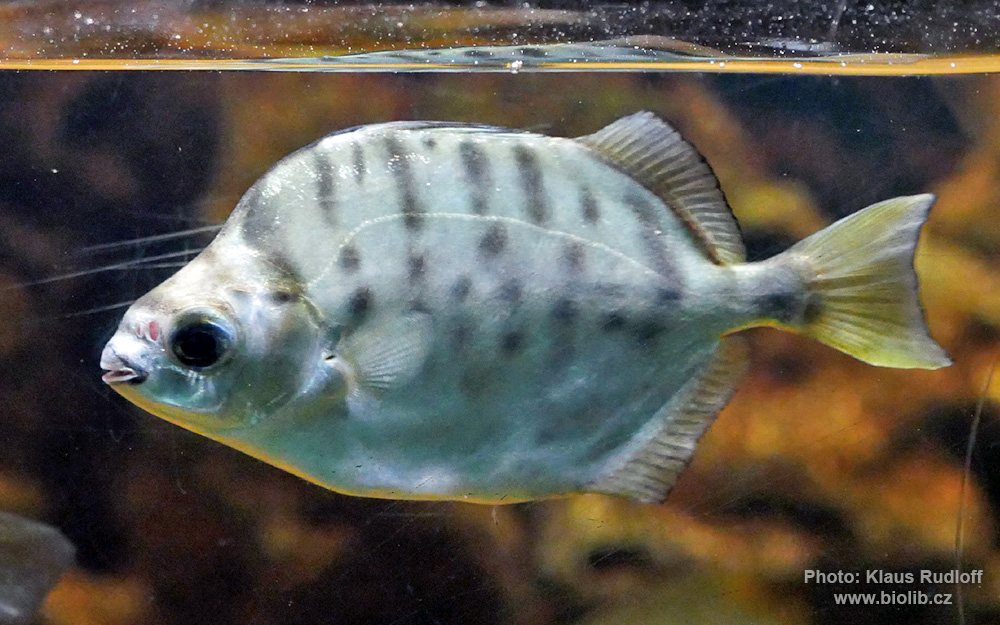Spotbanded scat
(Selenotoca multifasciata)

Classification
General data
The spotbanded scat has a deep, compressed body covered in vert small ctenoid scales. They have a steep dorsal profile to the head, a moderately large eye which has a diameter which is markedly shorter than the length of the rounded snout length. The small, horizontal mouth is not protractile and there are several rows of bristle like teeth on the jaws.
The dorsal fin has 7-12 spines and 16 soft rays while the anal fin has 4 spines and 15-16 soft rays. The first spine in the dorsal fin lies flat and there is a deep incision between spiny and soft rayed parts of the dorsal fin. The caudal fin is rounded in juveniles and truncate in adults. The rear margins of the soft rayed parts of the dorsal and anal fins is diagonal.
This species attains a maximum total length of 40 cm (16 in).
The background colour of this species is greenish or silvery with many dark, vertical bars on the upper flanks and spots, typically smaller than eye, arranged in roughly vertical rows on the lower flanks. The lips are black. The rear margins of the caudal fin and of the soft rayed parts of the anal and dorsal fins have a thin black margin which fades completely in individuals with a standard length longer than 6 cm (2.4 in).
The spotbanded scat is found from Sulawesi and Papua in eastern Indonesia Papua New Guinea, New Caledonia and northern and eastern Australia. In Australia this species range extends from Shark Bay in Western Australia along the northern coasts to Sydney in New South Wales. They inhabit brackish mangrove estuaries and coastal freshwater.











